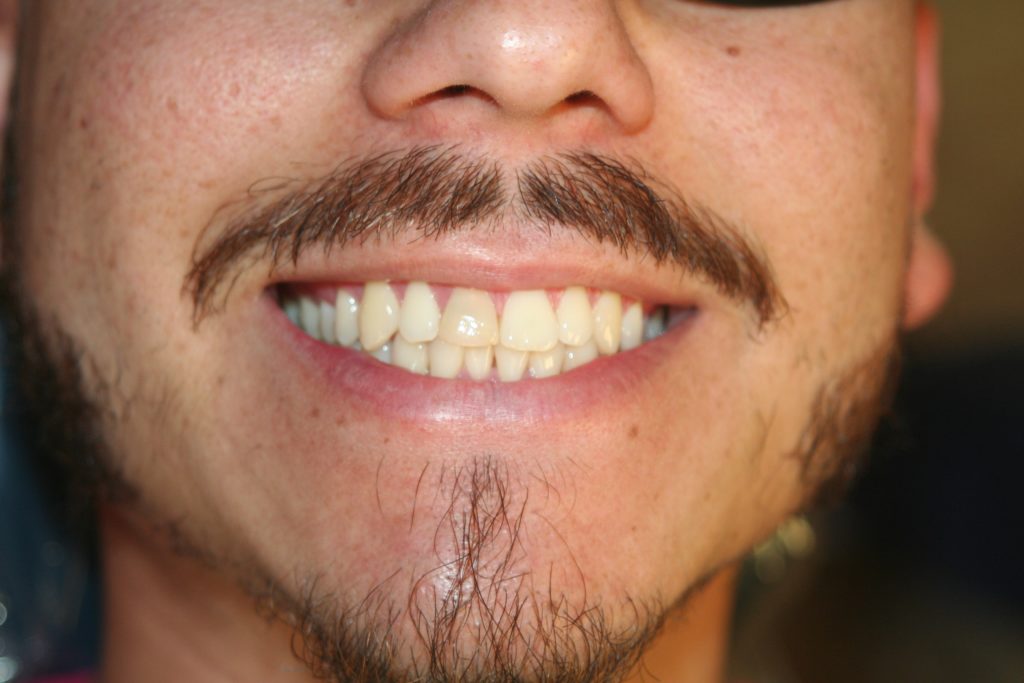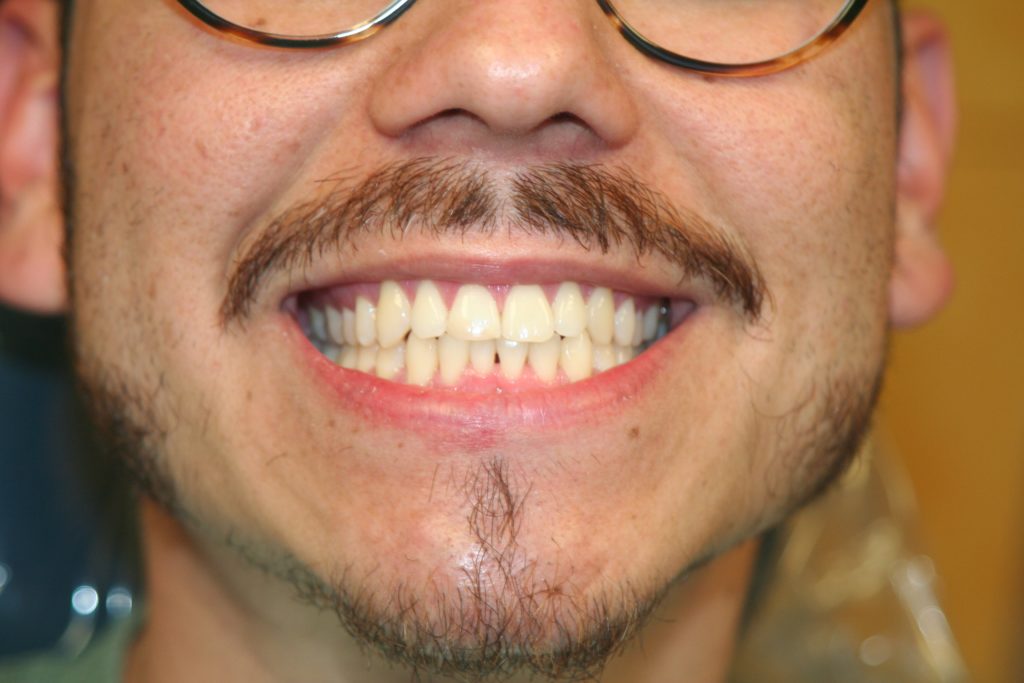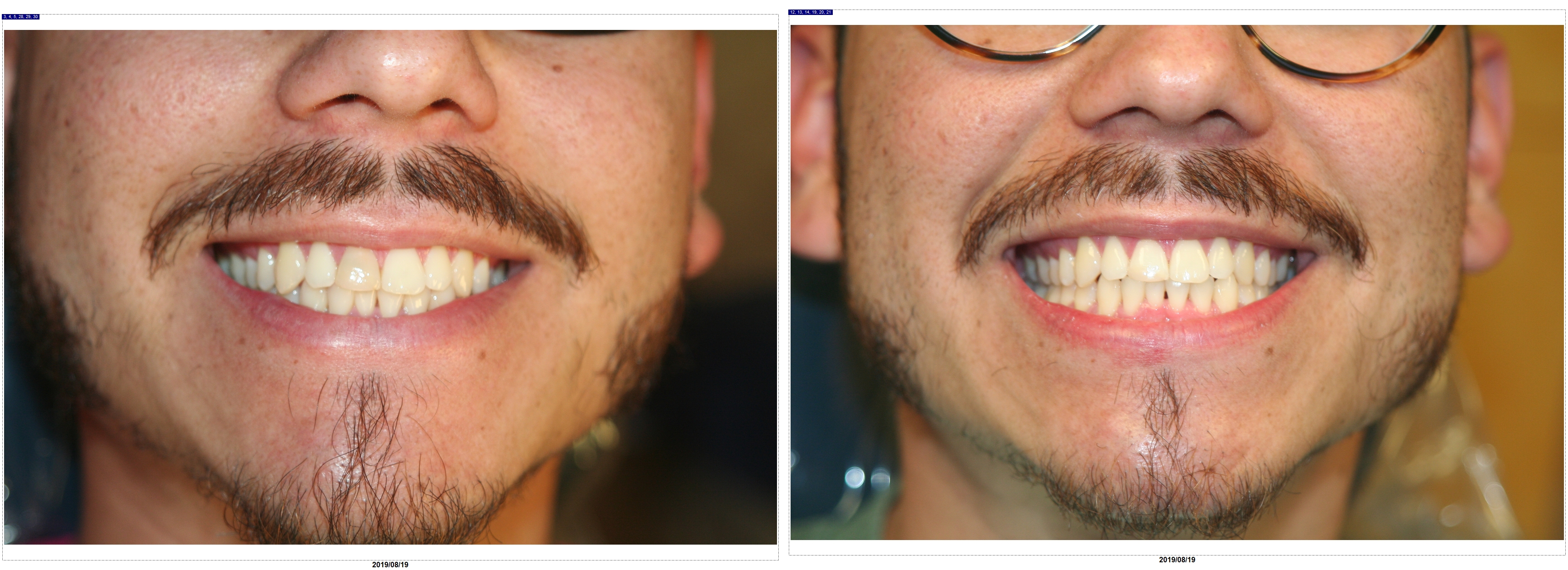Let me set the stage for you.
You are walking with your friends. Suddenly, you fall and hit your face against the ground. You feel shaken, and your nose has a small cut, with blood on your upper lip.
Your friends ask you, “Are you alright?”
You quickly assess yourself, and tell them, “I am fine. It’s just a scrape. We’re good, let’s keep walking.”
Unfortunately, sometimes the damage is unseen. The front tooth took the brunt of that impact spontaneously dies and later either requires a root canal or undergoes a sterile necrosis.
Fast forward 3 years, and now seemingly out of nowhere, the tooth has turned brown and looks like it has died. The tooth probably died shortly after the accident and started walling itself off internally. The remaining pulpal tissue (old blood vessels and nerves with trapped red blood cells inside the tooth) starts the inevitable process of breaking down. Now, the red blood cells break open releasing hemosiderin, with iron molecules (which look reddish brown) showing through the tooth.
Brown color change often happens on front teeth with or without a root canal after the tooth has died. So, we do Internal bleaching.
We open a window into the back of the tooth. Then, we place 38% hydrogen peroxide gel on a cotton pellet into the tooth. We seal the gel into place. Then, the patient is dismissed for 1 week. In 1 week, we re-assess, if the color is good then, we finish by placing a filling into the access opening. If the color still needs improvement we repeat the process by swapping out the whitening gel and repeat each week until the desired color is achieved.
Here is a recent case where we completed internal bleaching on #8. The tooth was very dark, so it took 4 treatments with the gel before we achieved our shade match goal.


The patient was very happy to improve the matching nature of these teeth.
If you need help with a tooth that does not look right, give us a call at 512-454-2744, or book online.
Thanks,
Dr. J. Russell McFarlane

